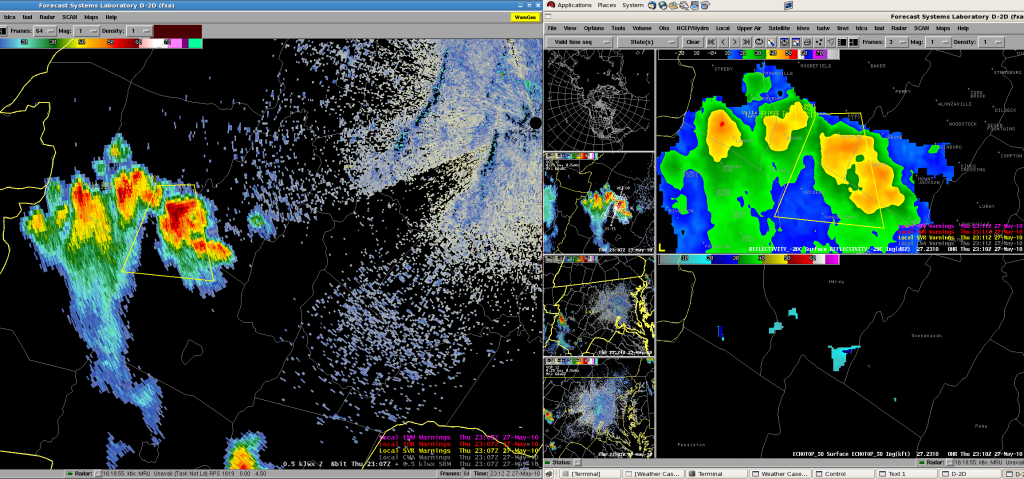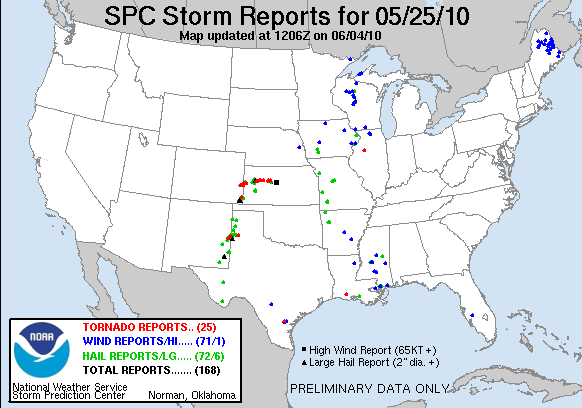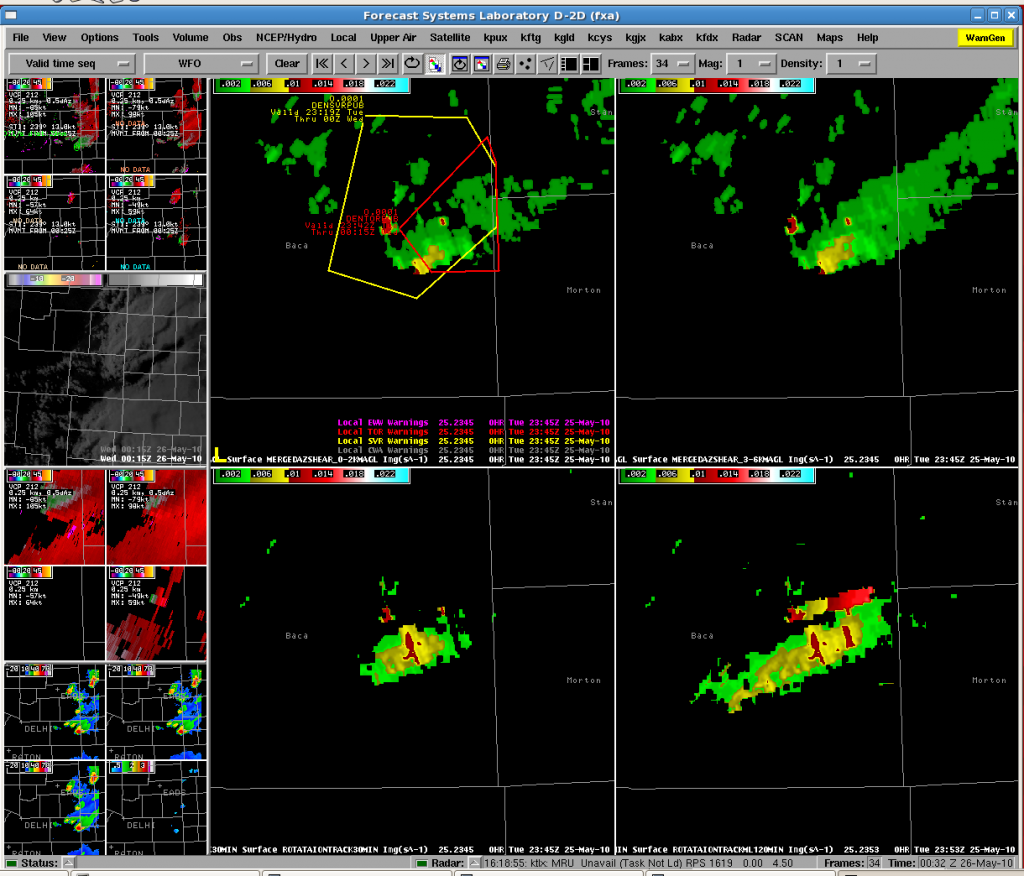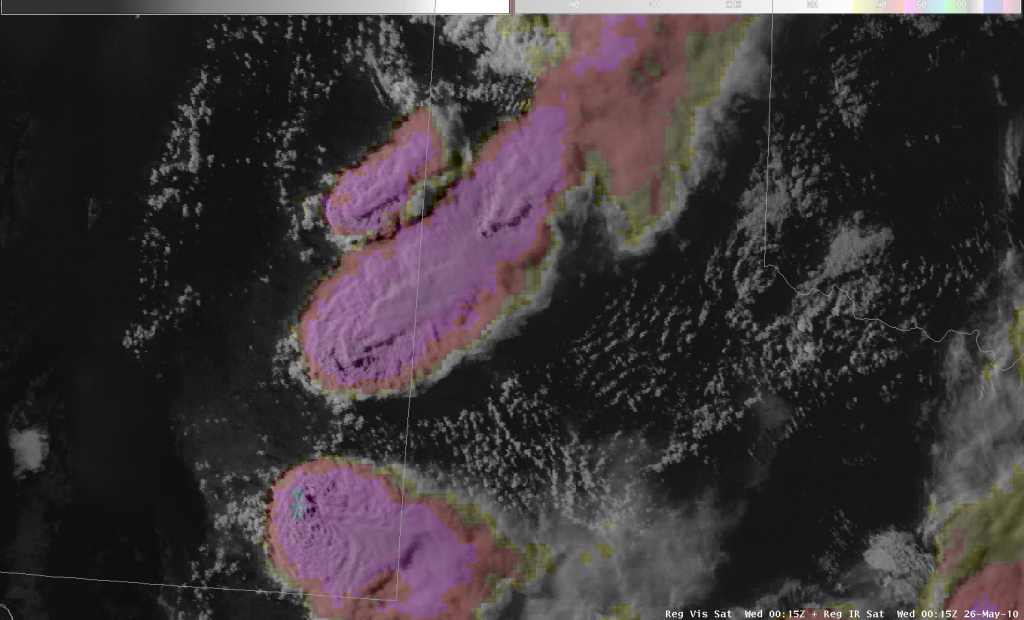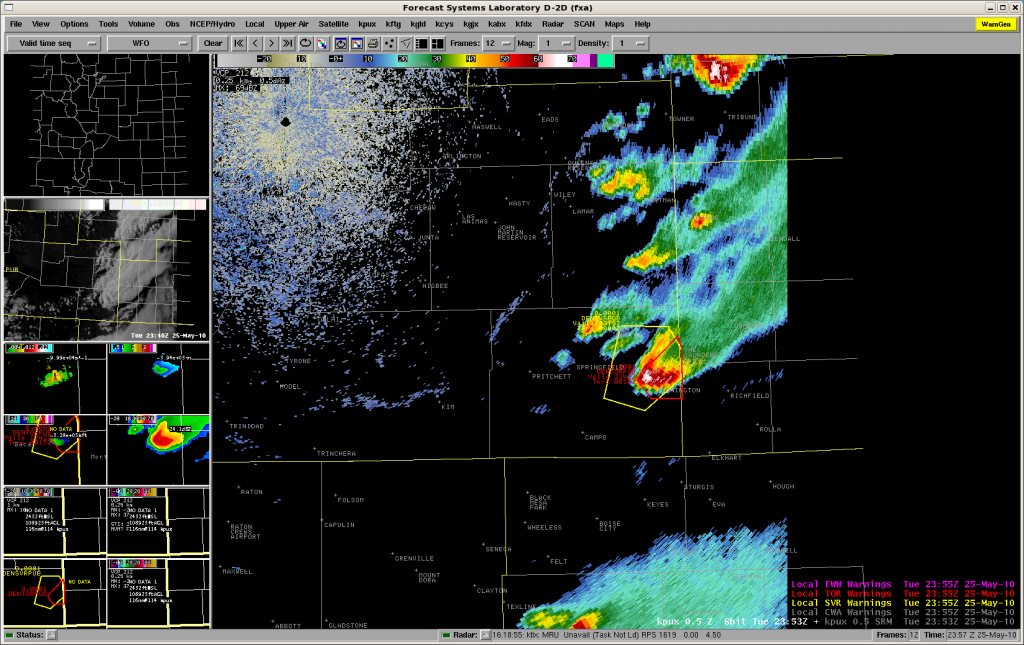We finally have the slow load problem for the experimental data on AWIPS fixed, and ORPG issues fixed, so for the last 45 minutes or longer, all data have been loading on time and fast. Crossing our fingers that our electronic duct tape will hold together.
One team is working storms for DDC’s area, but unfortunately, most of the storms have been hanging out just west of their CWA in PUBs area. So after a couple of hours waiting for storms (one SVR was issued and the storm dies rapidly), we ae going to switch that team to PUB.
Meanwhile, the other team has been working AMA’s area, and has been quite active issuing SVRs, mainly for hail threat. There is one significant left moving storm, and another “right mover”, actually nearly stationary, which are both hail threats. No TORs issued yet.
Greg Stumpf (MRMS Principle Scientist)

